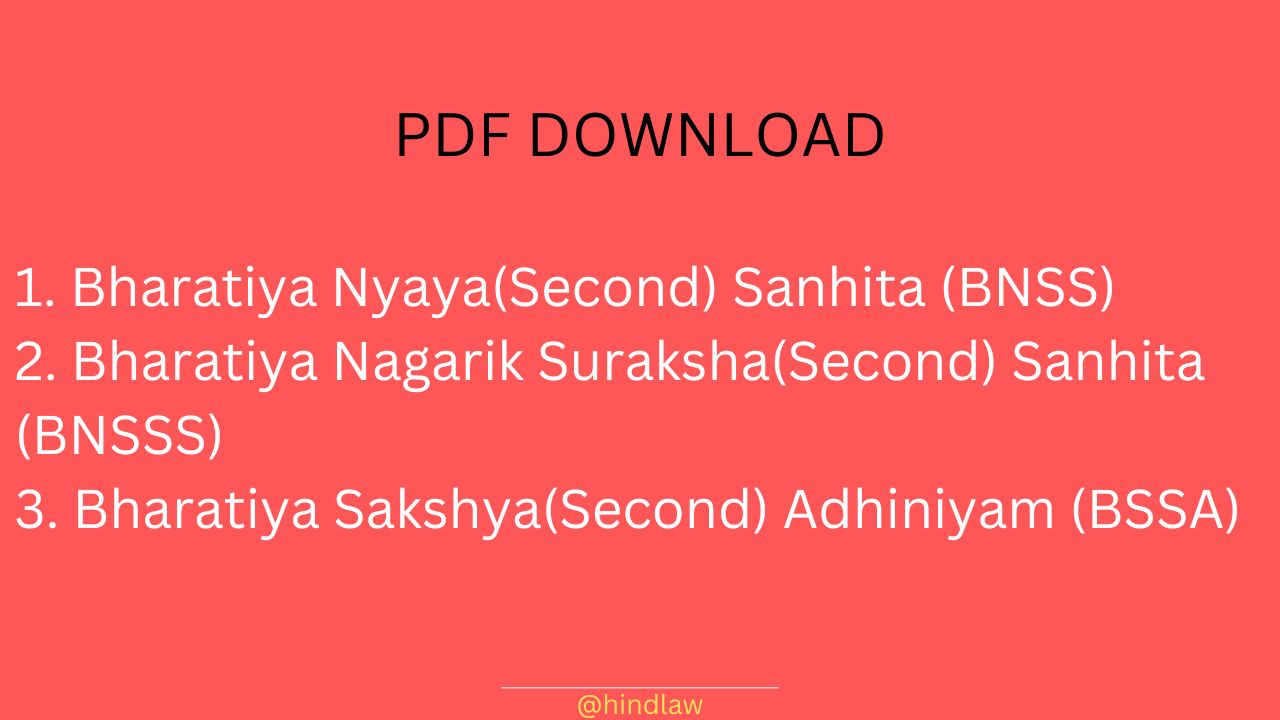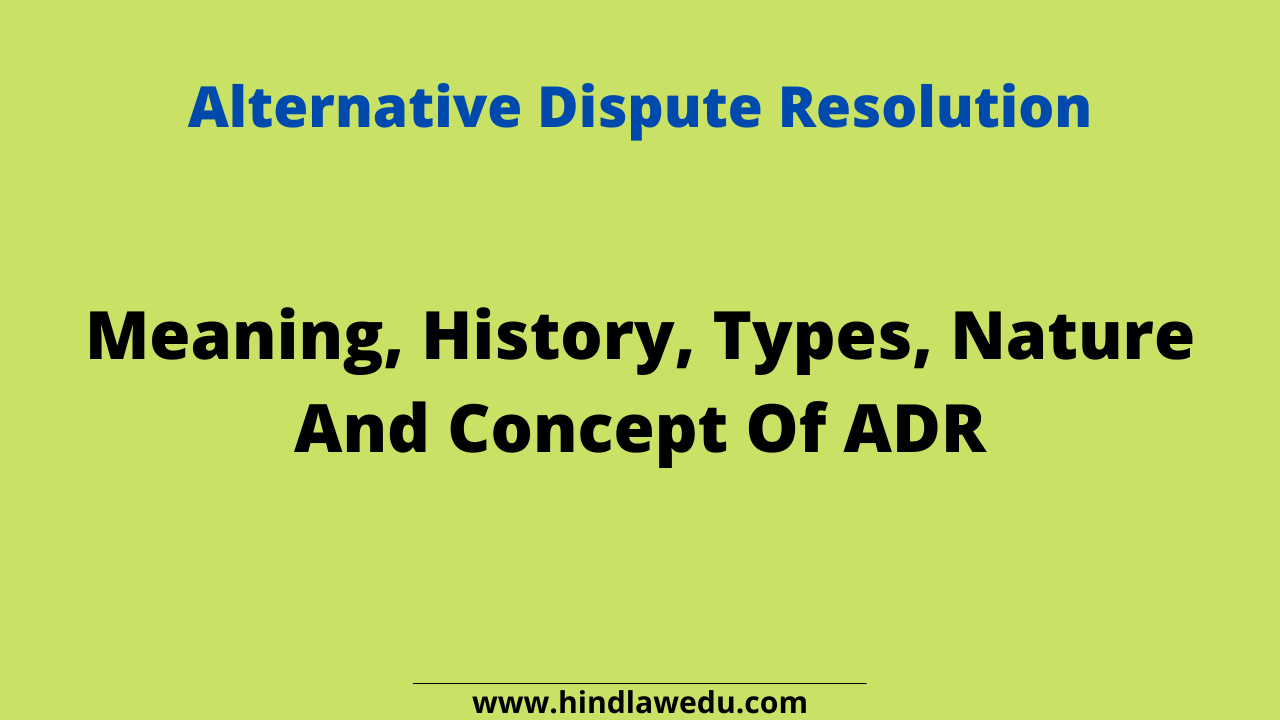Table of Contents
Introduction
India is one of the largest democratic countries in the world having its own constitution. The rights and interests of the people have been protected in the forms of fundamental rights under Part III and directive principles under Part IV of the constitution of India.
We know that our life is full of conflicts and to manage and resolve it there are different techniques. Negotiation techniques are often central to resolving conflicts and these basic techniques have been around for many thousands of years. Alternative Dispute Resolution (ADR) refers to a variety of resolution techniques designed to resolve issues more efficiently when the normal negotiation process fails, ADR is an alternative to the formal legal system. It is an alternative to litigation which takes place outside of the courtroom as the courts are overburdened with the cases.
Meaning Of ADR
ADR can be defined as a technique or mechanism of dispute resolution through the intervention of the third party. In ADR the neutral third party may bridge the gap between the parties by bringing them together through the process of arbitration, conciliation, mediation or negotiation, thus the ADR aims to provide an inexpensive, speedy and less formalistic remedy to the aggrieved party. Its purpose is to provide a remedy which is most appropriate in the circumstances of the case.
Historical Background In Indian Context
The huge pressure of cases pending before the Indian courts has compelled the chief ministers of the various states to consult the chief justices of the high courts and conduct a conference with a view to formulate appropriate strategies for dealing with this issue. In this context a conference had been held on 4th December, 1993 to devise the appropriate strategies to solve the pendency of cases in different courts all over the country. The delegates who participated in the meeting recommended that the dispute should be resolved through the mechanism of Alternative Dispute Resolution system through arbitration, conciliation, mediation, and negotiations because the mechanism of ADR should be an effective device for amicable settlement of the transactional disputes between the parties.
Further the law minister considered the necessity to set up regional centers for Alternative Dispute Resolution in different parts of the country.
The delegates who attended the conference suggested upgrading of the judicial infrastructure in the courts for the speedy trial. They expressed satisfaction over the excellent result achieved through the extensive computerization in the Supreme Court of India. Which resulted in record decrease in the pendency of cases and that is required to extend to subordinate courts all over the country. So justice can be delivered on time.
ADR originated in the USA in a drive to find alternatives to the traditional legal system, which was felt to be adversarial, costly, unpredictable, rigid, over-professional and limited to narrow rights based remedies as opposed to creative problem solving. In the beginning of the late 19 century, creative efforts to use arbitration and mediation emerged in response to the disruptive conflicts between labour and management.
Various types of ADR Mechanism
Before we talk about the various types of ADR mechanisms it is important to differentiate between the Binding and Non-Binding forms of ADR. Negotiation, Mediation, and conciliation are the Non-Binding forms it depends upon the willingness of the parties to reach voluntary agreement. Arbitration programs may be binding or non-binding. Binding Arbitration produces a third party decision that the party to the dispute must have to follow even if they disagree with the result like a judicial decision whereas Non-binding arbitration produces a third party decision that the parties may reject.
The various types of ADR Mechanism are –
- Arbitration
- Mediation
- Conciliation
- Negotiation
- Lok adalats
The Nature and Concept of ADR
- The ADR system is simple, free from procedural technicalities and result oriented. The ADR techniques are extra judicial in character.
- The ADR resolution system covers the civil and commercial nature of disputes. The mechanism of ADR with the help of various alternative techniques given very encouraging results in several categories of disputes.
- The role of the third person is a basic concept in ADR. In ADR disputes are settled with the assistance of a neutral third person. The neutral third person is selected or appointed by the parties of their own choice and without fear or favor in order to avoid any sort of bias.
- The basic concept of the ADR system is to resolve disputes. Whatever the case may be, the basic concept is to manage and resolve the disagreements between the parties at the lowest cost and with little adverse impact on business activities.
- The mechanisms of the ADR system are economical, Common and voluntary, this system results in huge savings to the litigant parties.
The objective of ADR system
The main objective of the mechanism of the ADR system is not to replace the judicial procedural laws but to decrease the time taken for trial. Its few main objectives are mentioned below –
- The ADR system provides cheap and speedy justice to the disputant.
- It aims to settle disputes on less lawyering.
- It aims to settle the dispute without any discord.
- It maintains confidentiality or keeping the information and disputes classified and inside the organization is key to the ADR system.
- The most important aim is to avoid long judicial proceedings and trials because it is an alternative mechanism.
Conclusion
It is a well known fact that there are plenty of cases which are pending before the Indian courts due to lack of resources including human resources and proper infrastructure. Although various steps have been taken towards the improvement of the system, the problem still continues.
India is a relatively under-developed country and majority of litigants are from below middle class and rural backgrounds. The mechanism of the ADR system is a viable substitute and effective in providing speedy, cheap and timely justice to litigants. The litigants can opt for any of various forums. It does not mean to replace the existing judicial system. But to aid and assist the existing judicial and justice delivery system in providing timely relief.
- Article 51 and 253: Government of India’s Obligation
- Arbitration: Meaning, History, Kinds and Advantages
- ADR System: Advantages And Disadvantages
- ADR System: Advantages And Disadvantages














